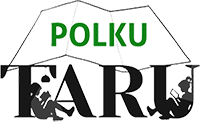Drama has a natural connection to reading
Out of all artforms, drama and corporeal expression are natural components for reading aloud. The reader engages in reading by using intonations and tones of voice as well as pauses and eye contact. Reader’s theatre method (Aerila & Kauppinen 2019) is an efficient tool for developing all aspects of literacy, and at the same time to learn to enjoy performing and acting as a member of a group. The reader’s theatre method is an example of the multidisciplinary nature of literature education, because it can combine visual art, music or exercise, and there is no limit as to the type of text used with it: a school book text, a poem, a passage from a novel or a self-written story will do. In a group of illiterate children, the reader’s theatre can be implemented so that the teacher reads aloud and the children can engage with the story by making noises and movements with their bodies, in certain parts.
In its traditional form, reader’s theatre is an efficient way to provide individual support for the development of all aspects of children’s literacy, as well as provide experiences of performance and teamwork. Reader’s theatre is actually a speech choir with additional movements and props, or an audio drama with visual elements. Ready-made scripts are available for reader’s theatre performances, but the teacher or the students can also make their own. When making a script based on informational text, it can include milieus, characters and story elements. Objects such as body parts or natural elements can receive human features. Basing the script on a fictitious text does not allow for as much freedom, because the text itself is a piece of art that changes if it gets altered too much.
Differentiation is easy with the reader’s theatre method, because children read texts alone, in pairs or in groups. The amount of reading can also vary. When children read a text in a performance by using several languages, it creates a fine impression. Reader’s theatre performances are easy to set up, which is why the adults in a group or a unit will be able to surprise children, on a short notice. In a group of illiterate children, a reader’s theatre performance can be implemented in the following way: based on the story that they listen to, the children draw a detailed comic that the teacher can complete with text. When the comic is finished, it can be used as a script for the play.

